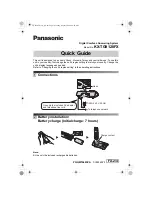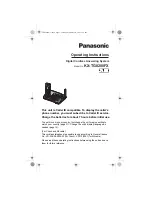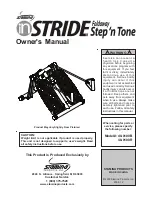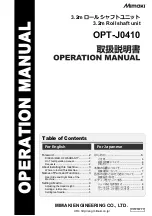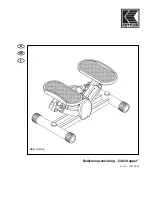
30
SETTING CHART
NOTE: A little fine tuning will improve your stitching in many cases. The following advice can
help you make adjustments:
1. Turn overedge cutting width dial to adjust cutting width.
2. Adjust needle tensions when you sew light or heavy weight fabric.
3. Reduce the tension when you use heavy thread.
4. Incorrect tension setting causes stitch skipping. Adjust the tension setting.
5. Tension settings might be affected if either or both needles are not correctly placed in
the needle bar (see page 16).
Try test-sewing with a scrap of the fabric you are going to use and find the best settings.
* When threading upper looper with wooly nylon thread, set the thread tension control
dial at ← 2 →.
Number of threads
4
3
3
2
Overedge cutting width dial
← 6 →
6
4 →
← 5 →
4
4 - 6
6
← 6 →
4 - 6
Needle to use
Left and Right
Left
Right
Left
Right
Right
Left and Right
Left
Right
Stitch finger
A
A
B
A
B
A
A
A
Two thread convertor
Tension
control
Left needle thread
←
4
→
←
4
→
-
0
→
-
-
-
-
←
4
→
0
→
←
4
→
-
Right needle thread
←
4
→
-
←
4
→
-
0
→
←
4
→
←
4
→
←
4
→
←
4
→
-
-
←
5
Upper looper thread
←
4
→
←
4
→
←
4
→
←
4
←
4
*
←
4
→
*
←
4
→
*
←
4
→
-
-
-
-
Lower looper thread
←
4
→
←
4
→
←
4
→
7
→
7
→
0
→
←
4
→
←
4
→
0
→
←
4
→
0
→
1
→
Stitch length control
2.5 - 3.5
2.5 - 3.5
3 - 5
2 - 2.5
←
R
→
←
P
→
2.5 - 3.5 2.5 - 3.5 2 - 2.5
1 - 2
Ref. No.
1
2
3
4
5
6
7
8
9
10
11
12
Overlock
Overlock,
wide
Overlock,
narrow
Flatlock seam
Narrow hem Rolled hem Picot stitch Super stretch Overlock
Wrapped
overlock
Rolled hem
Reference page
38
52
36
34
34, 38
52
34, 36
HClass_200s_EN.indd 30
2010-11-19 09:20:44































